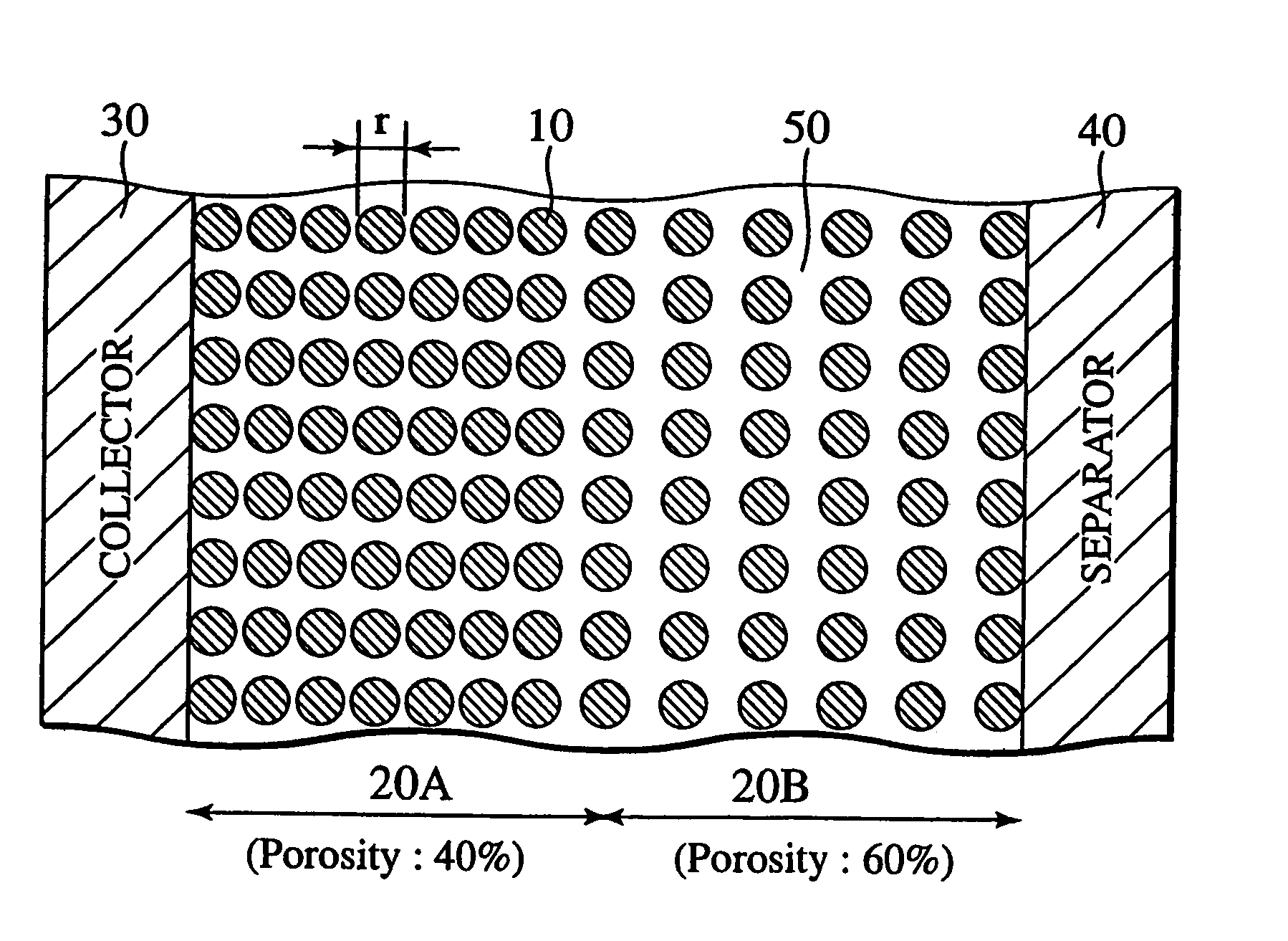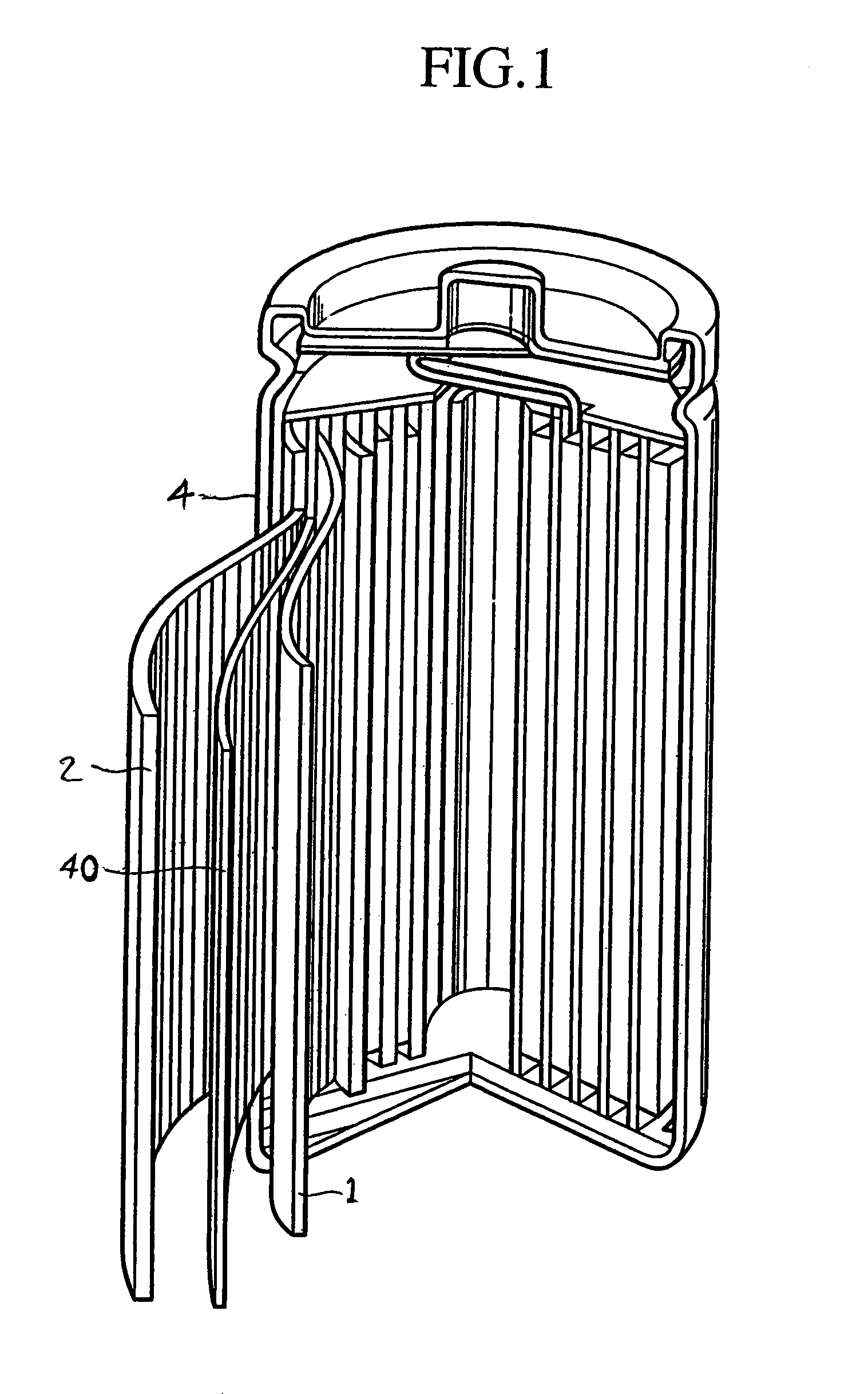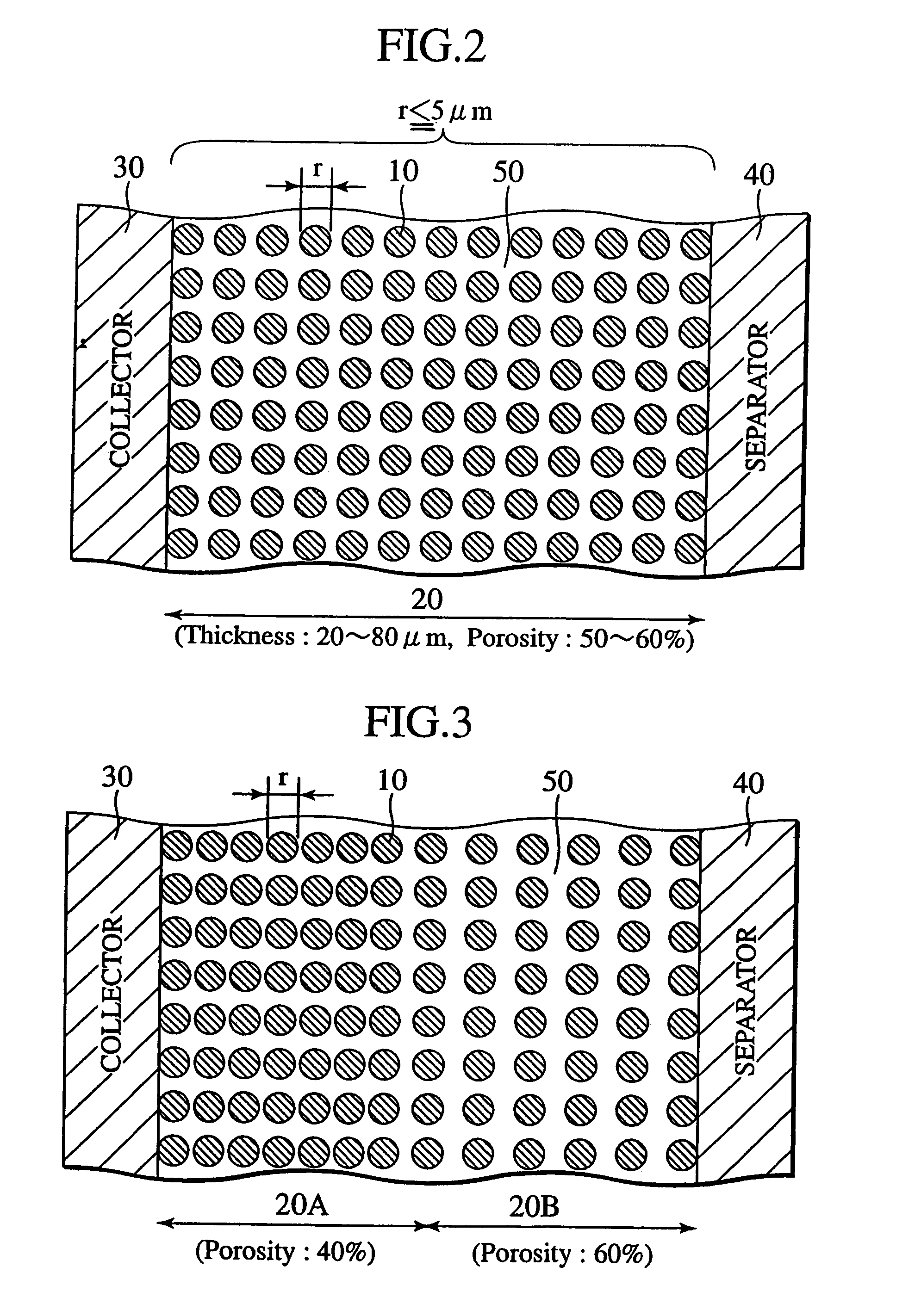Rechargeable lithium ion battery
- Summary
- Abstract
- Description
- Claims
- Application Information
AI Technical Summary
Benefits of technology
Problems solved by technology
Method used
Image
Examples
example 1
[0070]Lithium manganese oxide (LiMnO2) having the average particle diameter of 3 μm was used as the positive electrode active material. The specific surface area of the positive electrode active material was about 3 m2 / g. 75 wt % of the positive electrode active material, 10 wt % of acetylene black as the conductive material and 15 wt % of PVDF as the binder were mixed in NMP and coated on the aluminum foil (collector). Thus, a plurality of positive electrodes having the different porosities of the active material layers in the thickness of the active material layer of 60 μm were fabricated. The porosity was adjusted by the amount of the solvent, drying conditions and the pressing of the electrode. Metal lithium was used for the negative electrode active material, and a mixture of PC and DMC (volume ratio 1:1), in which 1M of LiPF6 was dissolved, was used as the electrolytic solution. Thus, a plurality of the rechargeable lithium batteries having the different porosities of the acti...
example 2
[0074]The lithium manganese oxide (LiMnO2) having the average particle diameter of 3 μm was used as the positive electrode active material. The specific surface area of the positive electrode active material was about 3 m2 / g. 75 wt % of the positive electrode active material, 10 wt % of acetylene black as the conductive material and 15 wt % of PVDF as the binder were mixed in NMP and coated on the aluminum foil (collector). Thus, a first active material layer having the porosity of 40% and the thickness of 30 μm was formed. Moreover, a second active material layer having the porosity of 60% and the thickness of 30 μm in the same composition was layered on the first active material layer. The porosity was adjusted by the amount of the solvent, the drying conditions and the pressing of the electrode. The rechargeable lithium ion battery was fabricated by using the positive electrode having the two active material layers of the different porosities, which were fabricated as described a...
example 3
[0075]The lithium manganese oxide (LiMnO2) having the average particle diameter of 3 μm was used as the positive electrode active material. The specific surface area of the positive electrode active material was about 3 m2 / g. 75 wt % of the positive electrode active material, 10 wt % of acetylene black as the conductive material and 15 wt % of PVDF as the binder were mixed in NMP and coated on the aluminum foil (collector). Thus, the positive electrode having the 50% porosity of the active material layer and the 60 μm thickness of the active material layer was fabricated. The porosity was adjusted by the amount of the solvent, the drying conditions and the pressing of the electrode. The rechargeable lithium ion battery was fabricated by using the positive electrode fabricated as described above, the negative electrode active material that consists of the metal lithium, and the electrolytic solution that consists of the mixture of PC and DMC (volume ratio 1:1) dissolving 1M of LiPF6 ...
PUM
 Login to View More
Login to View More Abstract
Description
Claims
Application Information
 Login to View More
Login to View More - R&D
- Intellectual Property
- Life Sciences
- Materials
- Tech Scout
- Unparalleled Data Quality
- Higher Quality Content
- 60% Fewer Hallucinations
Browse by: Latest US Patents, China's latest patents, Technical Efficacy Thesaurus, Application Domain, Technology Topic, Popular Technical Reports.
© 2025 PatSnap. All rights reserved.Legal|Privacy policy|Modern Slavery Act Transparency Statement|Sitemap|About US| Contact US: help@patsnap.com



